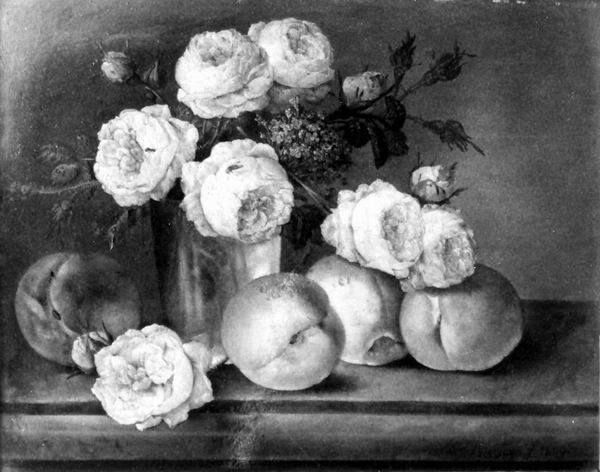
Fruits and Flowers
Department of Art after 1800
| Artist | |
|---|---|
| Culture | Netherlandish |
| Date | second half of the 19th century |
| Object type | painting |
| Medium, technique | oil on canvas |
| Dimensions | 85 x 117.5 cm |
| Inventory number | 255.B |
| Collection | Department of Art after 1800 |
| On view | This artwork is not on display |
Josef Israëls, one of the seminal figures of The Hague School, completed his studies in Amsterdam and in the École des Beaux-Arts in Paris, after which he immersed himself in the study of the painters of the Barbizon School and old Dutch artists, of whom Rembrandt exerted especially great influence on him. At the beginning of his career he painted romantic and historical scenes but his first
pictures did not bring him success. Upon returning to the Netherlands, he lived in Zandvoorth, where he discovered new themes through the observation of nature and rural life, which transformed his style and technique alike. ‘His works are painted with shadows and pain’, a French contemporary journalist summed up the art of Israëls, who had an acute sensitivity in capturing the processes of nature
and the soul.
His Orphan Girls of Katwijk was already unanimously recognised by critics after its exhibition at the Paris Salon in 1866. The painting depicts three simply dressed young women in linen bonnets sitting around a table in a humbly furnished room. Two of them are sewing and the third one is cutting out fabric. The light filtering through the half curtained-off window is reflected on the white materials and the faces of the orphans. They are not speaking but are immersed in their work. The
atmosphere is calm but sad at the same time. The interior is only decorated with three paintings, two vases and a book with a clasp lying open on a stand. Critics of the contemporary press interpreted the work as the symbol of puritan Protestant lifestyle and the three orphan girls as embodying simplicity, purity and work. The painting was reproduced in numerous Dutch and French magazines and was
bought by a famous art collector, Comte d’Aquila. A year later, in 1867, it was displayed at the Exposition Universelle in Paris. After some time it entered the collection of Count János Pálffy, a prominent Hungarian art collector, who bequeathed it to the Hungarian National Gallery. The theme of orphan girls sewing was later depicted by Israëls again, and he even painted a small version of the Budapest canvas with a similar composition but slightly changing the details, which is preserved in the Pushkin Museum in Moscow.
Anett Somodi
Gergely, Mariann, Bereczky, Loránd (ed.), A Hágai Iskola: A 19. századi holland festészet mesterművei a Haags Gemeentemuseum gyűjteményéből, Magyar Nemzeti Galéria, Budapest, p. 66-67.
Peregriny, János, Az Országos Magyar Szépművészeti Múzeum állagai. 3.rész, Új szerzemények. 2. füzet: c, Az 1912. évi szerzemények; d, Függelék: 1., Néhai gr. Pálffy János hagyományáról felvett jegyzőkönyvek; 2., Kifüggesztésre, másolásra s elhelyezésre vonatkozó adatok: e, Kimaradt festmények; f, Javítások; g, Tárgymutató az 1. és 2. füzethez; h, Tartalomjegyzék, Országos Magyar Szépművészeti Múzeum, Budapest, 1915.
Matits, Ferenc, “Haagse School in Hongaars bezit”, Pulchri 1382-1229. 20. jg. nr. 1. (1992), p. 14-15.
Matits, Ferenc, “Quelques pièces de la collection du XIXe siècle conservées au Département d’Art Moderne: Deux tableaux hollandais de la collection du XIXe siècle/A Modern Képtár 19. századi gyűjteményből: A 19. századi gyűjtemény két holland képe”, Bulletin du Musée Hongrois des Beaux-Arts/Szépművészeti Múzeum Közleményei 79 (1993), p. 69-74, 131-134.
Treasures from Budapest : European and Hungarian masterpieces from the Museum of Fine Arts, Budapest and the Hungarian National Gallery: Japan-Hungary friendship 150th anniversary: Exhibition at the National Arts Centre, Tokyo, on the 150th anniversary of the Japanese-Hungarian friendship 2019.12.04 – 2020.03.16., Nikkei Inc, Tokyo, 2019.
This record is subject to revision due to ongoing research.